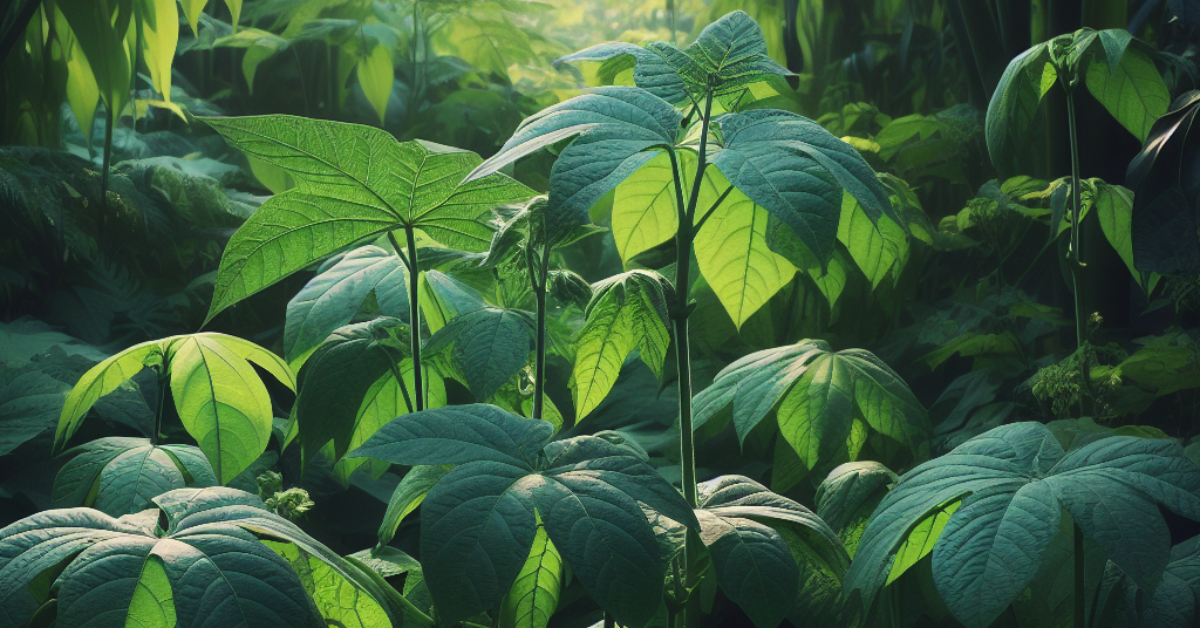Aibika (Abelmoschus manihot), also known as Okra-leaved Hibiscus or Sunset Muskmallow, is a versatile and nutritious plant that’s easy to grow in Eastern Australia. In this OrganicMotion article, we’ll provide you with all the information you need to successfully cultivate and utilize Aibika in your garden, along with a delicious recipe to enjoy this edible delight.
About Aibika
Botanical Overview: Aibika is a fast-growing perennial shrub from the hibiscus family, Malvaceae. It’s native to Papua New Guinea and other parts of Oceania. This plant is characterized by its large, heart-shaped leaves and striking hibiscus-like flowers.
Climate Requirements: Aibika thrives in warm, tropical and subtropical climates. It’s well-suited for Eastern Australia, particularly in areas without frost.
Planting Schedule in Eastern Australia
- Spring (September – November): Spring is the best time to plant Aibika in Eastern Australia. This allows the plant to establish itself during the warmer months, which it prefers.
- Site Selection: Choose a sunny or partially shaded location with well-drained soil. Aibika can grow in a variety of soil types but thrives in fertile, loamy soil. It’s also a great choice for coastal gardens.
- Seed Preparation: Aibika can be propagated from seeds or cuttings. Seeds should be soaked for a few hours before planting. Alternatively, you can purchase seedlings or take cuttings from established plants.
- Planting: If starting from seeds, sow them directly in the garden or in containers about 1 cm deep. If using cuttings, plant them at the same depth.
- Spacing: Allow ample space between plants, approximately 60-90 cm apart, to accommodate their broad growth.
- Watering: Keep the soil consistently moist but not waterlogged. Aibika thrives in moist conditions.
- Mulching: Apply mulch around the base of the plant to help retain moisture and suppress weeds.
- Fertilization: While Aibika is relatively low-maintenance, a balanced, slow-release fertilizer can encourage healthy growth.
Caring for Your Aibika Plants
- Regularly prune Aibika to encourage bushier growth and a more productive harvest.
- Remove any yellowing or damaged leaves as needed.
- Aibika can become top-heavy, so consider staking or providing support to prevent the plant from toppling.
Harvesting and Enjoying Aibika
- Aibika leaves can be harvested when they are young and tender, typically around 8-10 weeks after planting. Choose leaves that are 10-20 cm long.
- The leaves can be used fresh in salads, stir-fries, or as a cooked vegetable.
- Aibika flowers are also edible and can be used in salads or as a garnish.
Recipe: Aibika and Coconut Stir-Fry
Ingredients:
- Fresh Aibika leaves (about 250g)
- 1 cup of coconut milk
- 2 cloves of garlic, minced
- 1 small onion, finely chopped
- 1 red chili, finely sliced (adjust to your spice preference)
- 1 tablespoon of cooking oil
- Salt and pepper to taste
Instructions:
- Heat the cooking oil in a pan over medium heat.
- Add the minced garlic and chopped onion. Sauté until they turn translucent.
- Stir in the finely sliced red chili for a bit of heat.
- Add the Aibika leaves and cook until they wilt and become tender.
- Pour in the coconut milk and let the mixture simmer for a few minutes.
- Season with salt and pepper to taste.
- Serve your Aibika and Coconut Stir-Fry as a side dish or over steamed rice.
Rewarding experience
Cultivating Aibika in your Eastern Australian garden is a rewarding experience. With its lush, edible leaves and vibrant flowers, Aibika adds a touch of the exotic to your culinary adventures. By following the planting schedule and care guidelines outlined in this article, you can enjoy the many delights of this versatile and nutritious plant, such as the delectable Aibika and Coconut Stir-Fry.
